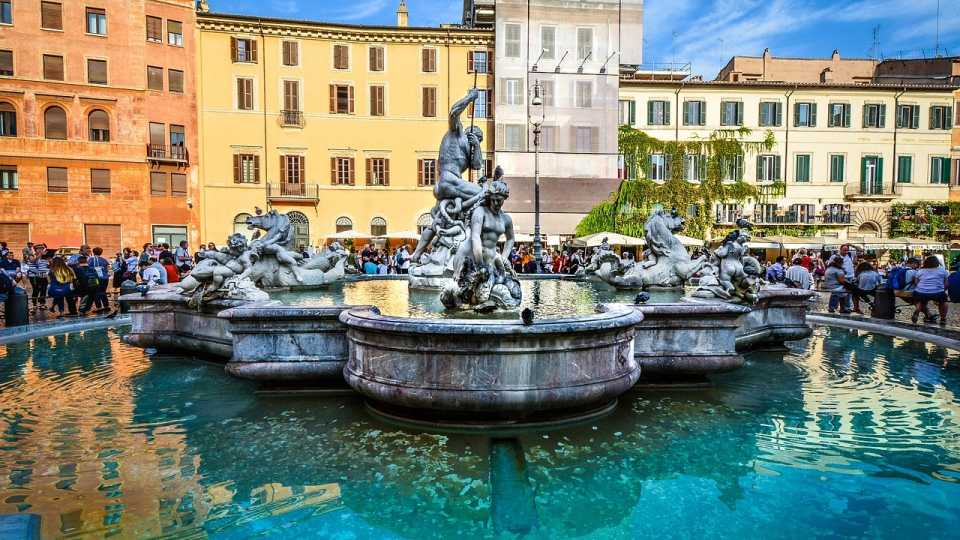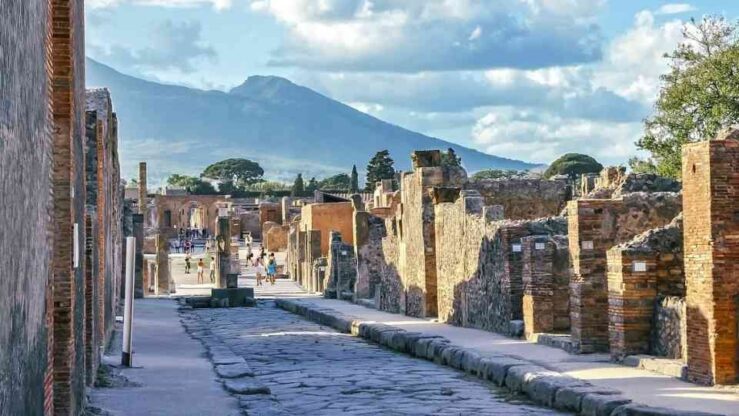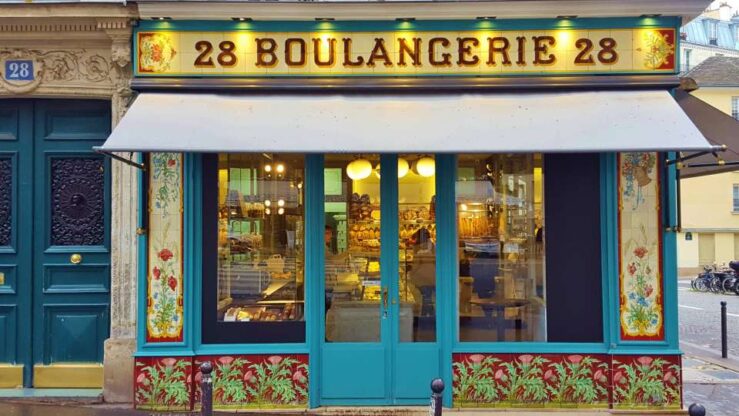Rome Tourist Attractions & Sights Around Piazza Navona
1. Campo de’ Fiori
2. Pantheon
3. Piazza Navona
4. Castel Sant’Angelo
5. Vatican Museums
6. St Peter’s Basilica
The popular and scenic Piazza Navona is a must-see during your Rome stay. You can in fact easily spend a full day sightseeing in Rome around the famous square, including the iconic tourist attractions and sights located just ’round the corner’ of the piazza. These sights include the Pantheon, the Vatican Museums and the St Peter’s Basilica – which for some visitors is even the most important landmark in Rome!
Today, you will start the day meandering around the Campo de’ Fiori, where a lively daily market with traditional products and gifts is held most mornings (except on Sundays). The name ‘flower field’ refers to the Middle Ages, when this part of the city used to be a meadow.
In ancient times this area was an empty space between Pompey’s Theatre and the Tiber. Little by little beautiful Renaissance palaces were erected in the neighbourhood – such as the Orsini family palace and the Palazzo della Cancelleria which still flank the square. At that time the surrounding streets were market streets and the square became a cherished part of the Via Papale, the Pope’s road.
With time Campo de ‘Fiori became a daily vegetable and fish market – and today it is still one of the interesting sights in Rome – a vibrant and popular market both with local residents and visitors! Take a look at it – and maybe buy a few interesting spices, fruit, vinegar, wine, limoncello, panini – and other souvenirs here!
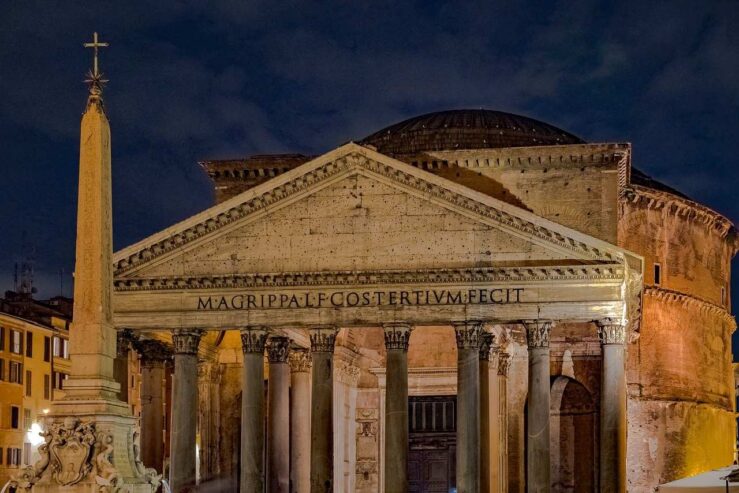
The Pantheon | Photo: djedj / Pixabay
Next thing on your agenda will be the Pantheon, the largest unsupported dome in the world! Its diameter is 43.30 m (142 ft). It is very well proportioned since the diameter is precisely the distance from the floor to the top of the dome!
The structure is an ancient Roman temple, which was supposedly initiated under the reign of Trajan (98-117 CE) and completed by Emperor Hadrian in year 125 AD. Anyway, according to the legend the original Pantheon was dedicated to Rome’s founder, Romulus!
As the best preserved building in Rome, it provides you with a unique opportunity to step back in time and experience ancient Rome inside the rotunda.
The dome, which is rather Roman in style, has a circular 8.8-metre opening to the sky, a so-called oculus. Notice the massive wall of the rotunda which is unbelievably thick – all 6 metres!
In the past there were statues of both Venus, Mars, and Julius Caesar inside the building. Many years later, the Pantheon was converted into a Catholic church.
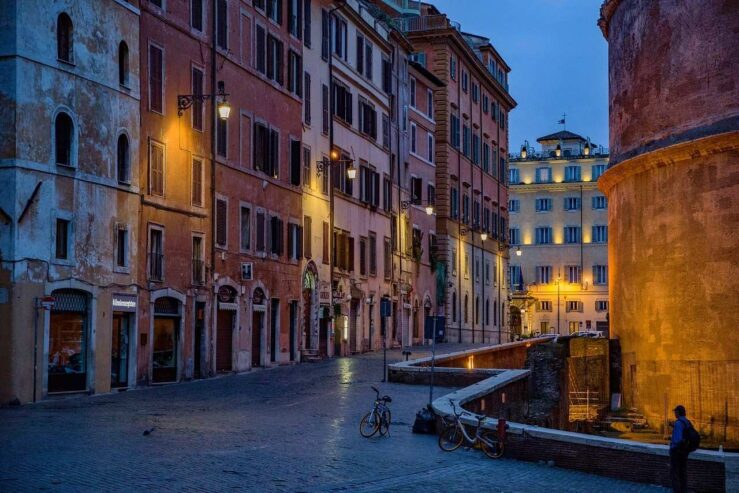
Street at the Pantheon | Photo: djedj / Pixabay
When studying the porch, you will notice that it is very classical Greek in style – as opposed to the dome.
Inside the Pantheon you will also find the tombs of tombs Italian monarchs in the period 1870-1946, as well as the tomb of Raphael (1483-1520).
At a short distance from the Pantheon you will arrive at the stunning Piazza Navona.
Now it is time for one of the truly breathtaking sights to behold in Rome, the Piazza Navona. It features all three impressive fountains, the Fontana dei Quattro Fiumi, the Fontana del Moro and the Fontana del Nettuno.
La Fontana dei Quattro Fiumi means the ‘Fountain of Four Rivers’. It was designed by Bernini in 1651 for Pope Innocent X. Around an Egyptian obelisk centrally located in the Piazza Navona, the four rivers, the Nile (representing Africa), the Danube (representing Europe), the Ganges (representing Asia), and the Río de la Plata (representing the Americas), symbolise the extension of the papal power.
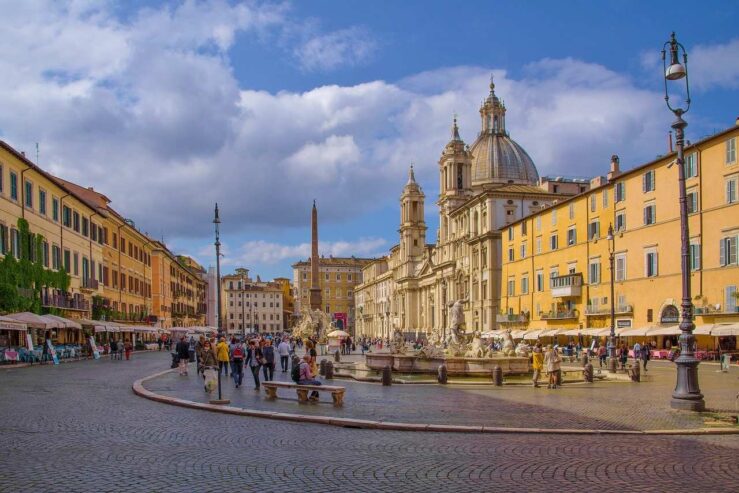
Piazza Navona – Rome Tourist Attractions & Sights| Photo: djedj / Pixabay
The Fontana del Moro from 1575 at the southern end of the Piazza Navona shows a Moor standing in a conch shell, fighting with a dolphin and surrounded by four Tritons. The Moor, designed by Bernini, was added in 1653.
The third fountain on the beautiful Piazza Navona is the Fontana del Nettuno, the Neptune Fountain, from 1574, depicting Neptune surrounded by sea nymphs which were added later in 1878. It was designed by Giacomo della Porta, who also stood behind the basin of the Fontana del Moro, and was funded by Pope Gregory XIII.
The Piazza Navona is a vibrant square with restaurants and street artists who contribute to the lively atmosphere. There are many lunch options around the square! Do also try some Italian ice cream here and chill out in one of the most stunning squares in Rome!
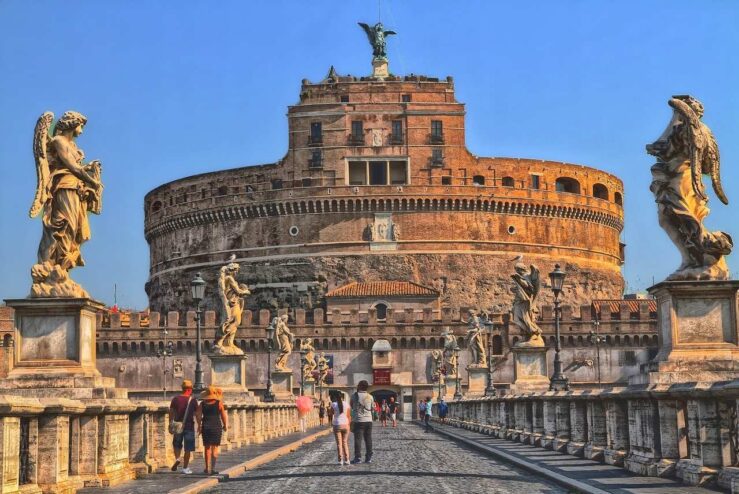
Castel Sant’Angelo | Photo: Bernd Buchfeld / Pixabay
Continuing in direction of the Tiber River, you will reach Castel Sant’Angelo or the ‘Castle of the Holy Angel’. It is an old fortress in a cylindrical building located on the right riverbank. Its construction was initiated in year 135 by Emperor Hadrian who intended to use it as a mausoleum for himself. His ashes were placed here after his death in year 138 AD. Subsequently, the remains of other emperors were also placed at this location, the last one being Emperor Caracalla in 217 AD.
The massive construction was converted into to a military fortress in 401 AD and included in the Aurelian Walls.
Years later, a corridor was established connecting Castel Sant’Angelo with the Vatican City, such that the Pope could use it in an emergency situation. Pope Clement VII actually used it as a convenient refuge at a later time in history. Finally, it also got to serve as a prison and even as an execution site for some years!
The Vatican Museums are next.
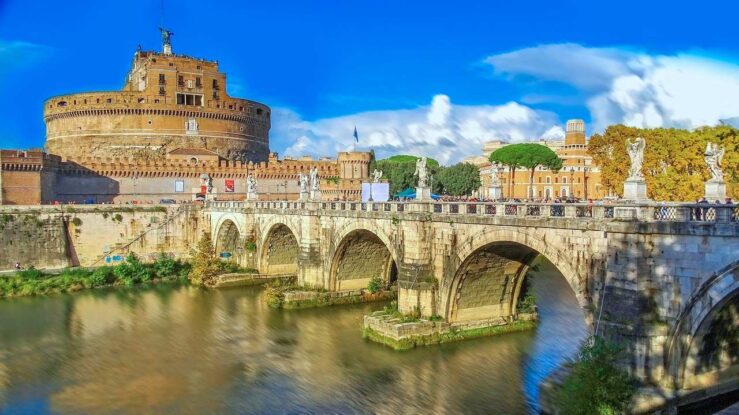
The Ponte Vittorio Emanuele II – Rome Tourist Attractions & Sights| Photo: Walkersk / Pixabay
You will now get the chance to visit one of the most popular attractions in Rome – the absolutely outstanding Vatican Museums. We definitely recommend that you book your ticket online before arriving here.
The Vatican Museums are located within the Vatican City, the Holy See’s independent city state in Rome. Together with the cultural museums including the Sistine Chapel, the Vatican City State holds the impressive St Peter’s Basilica. It is the world’s smallest sovereign state with both diplomatic and religious independence, only covering an area of 49 hectares and having a population of approximately 825 residents. It is ruled by the Pope who is both the bishop of Rome and the head of the Catholic Church.
In the 16th century the Vatican Museums were founded by precisely Pope Julius II to display the art works belonging to the popes. The museums were opened to the public outside the Vatican City by Pope Clement XIV in 1771.
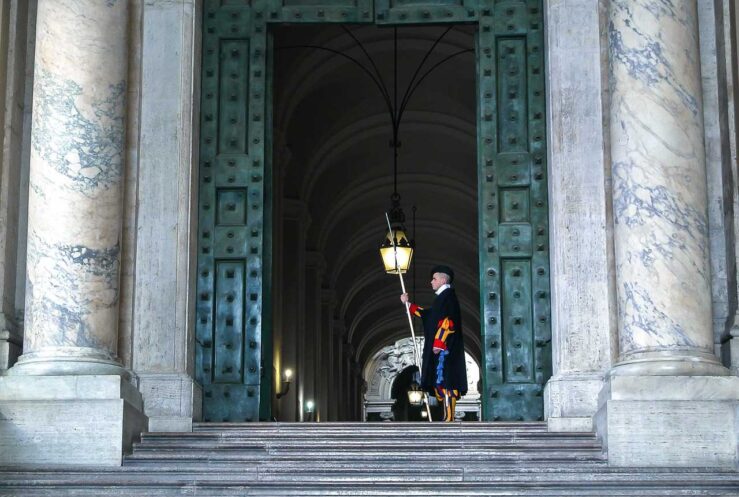
The Pontifical Swiss Guard is a unit maintained by the Holy See serving as the de facto military of the Vatican City | Photo: Manuel Romero / Pixabay
Today, the Vatican Museums boast some of the greatest art collections in the world. It is really huge! The 7 km of corridors inside the museums contribute to the fame of the Vatican art.
You will find a wide variety of exhibits here ranging from Egyptian sculptures and mummies to eminent Etruscan art and absolute masterpieces within the painting genre.
As the icing of the cake you will admire Michelangelo’s phenomenal Renaissance ceiling in the Sistine Chapel, painted between 1508 and 1512, as well as the spectacular tapestries by Raphael! Other Renaissance artists who have contributed to the Sistine Chapel and the Vatican Museums include Botticelli, Ghirlandaio, Pinturicchio, Perugino and Luca Signorelli.
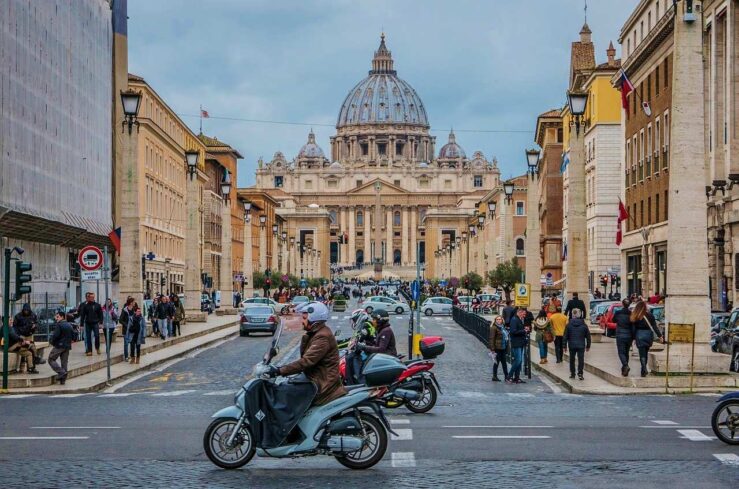
St Peter’s Basilica – Rome Tourist Attractions & Sights| Photo: Mauricio A / Pixabay
After the Vatican Museums you will as your last activity on Day 3 visit one of the other Vatican sights, namely the spectacular St Peter’s Basilica – definitely a top sight in Rome. It is huge and can accommodate approximately 20,000 people.
With its length of 190 m (624 ft) and height of 46 m (150 ft) with the dome even reaching 136 m (447ft), it is one of the largest churches in the world and an impressive pilgrimage site for Christians. A number of buildings, which you would consider really large in the rest of the world, can actually easily stand entirely inside the dome! You will marvel at its height once standing right under it!
Before the present basilica, also known as the New St Peter’s Basilica, there was an older construction. This old church was torn down before the ‘new’ church saw the light of day. Its construction was initiated by Pope Julius II in 1506 and only completed in 1615 under Paul V.
Inside it features St Peter’s Baldachin, which is a Baroque sculpted bronze canopy designed by Bernini, and the Pietà, a Renaissance sculpture by Michelangelo which shows the body of Jesus on his mother Mary’s lap after his crucifixion.
Are you going to Florence? Check out here which museums and sights you can cover in 3 days in the Renaissance city: Florence – What to See in 3 Days?
Read next: Sightseeing in Siena
See: How to Travel Light
Tourist Attractions & Sights Around Piazza Navona in Rome
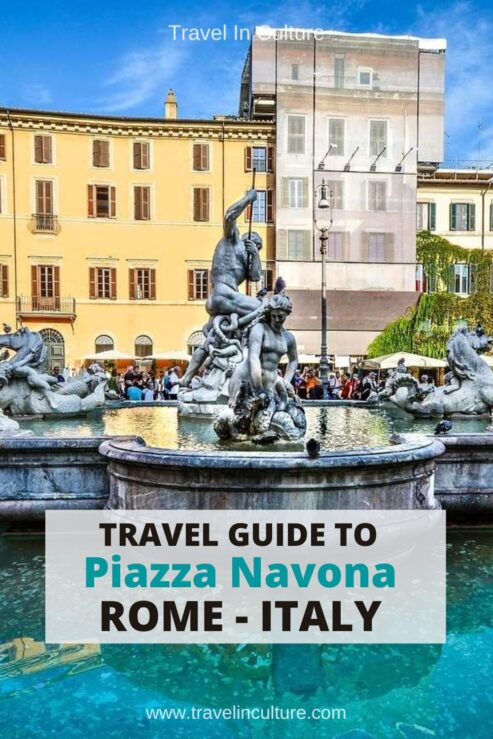
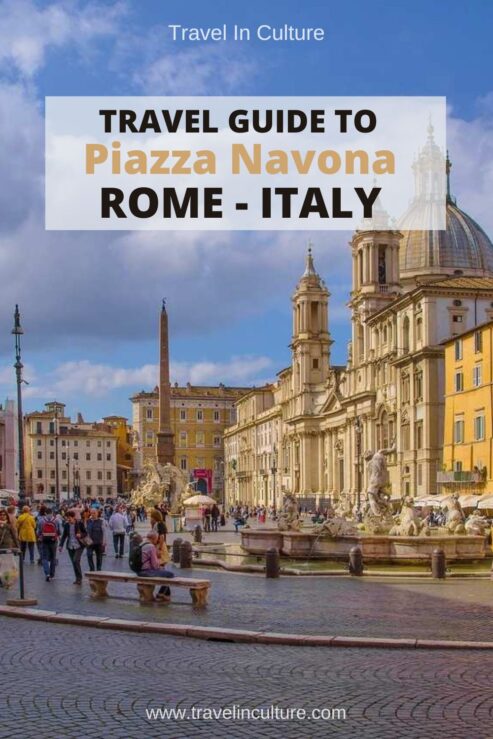
Tourist Attractions & Sights Around Piazza Navona in Rome
Featured image of
Rome Tourist Attractions & Sights Around Piazza Navona:
Kirk and Mimi / Pixabay
Piazza Navona and other Rome attractions and sights – Rome sightseeing – Rome travel guide


